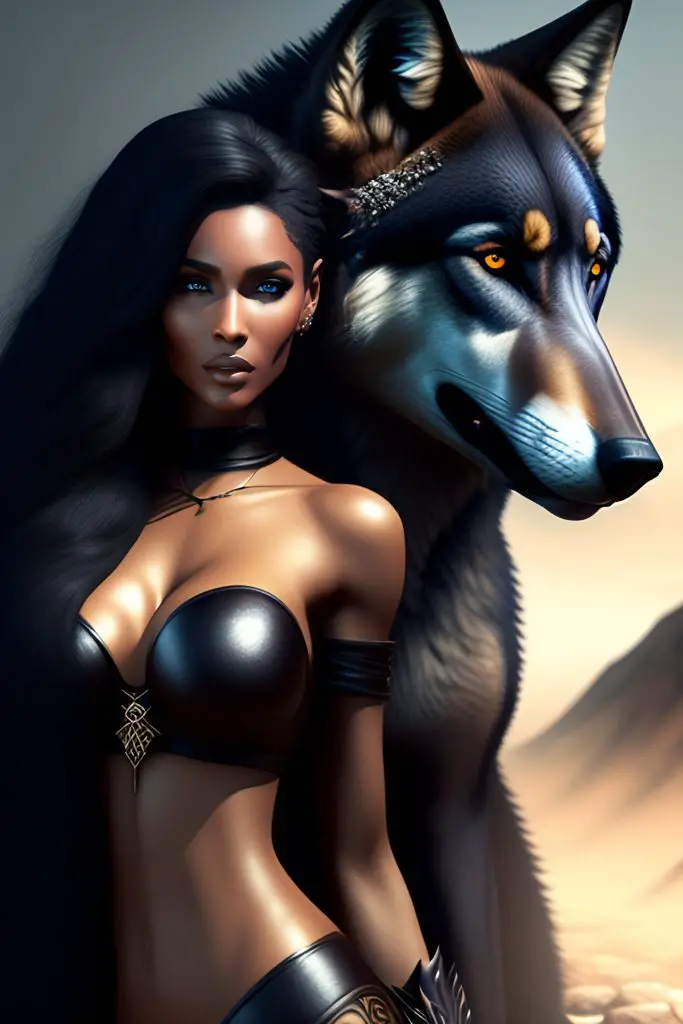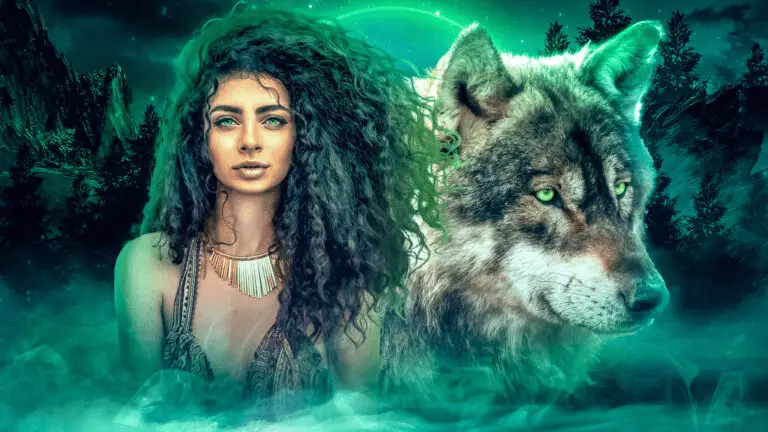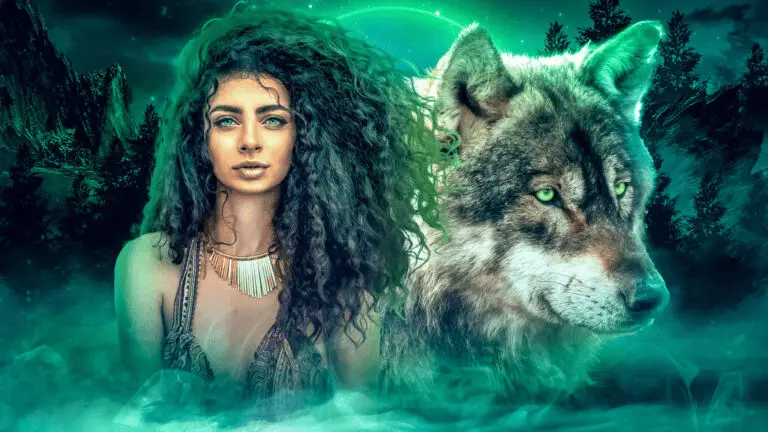

Werewolves have long been a source of fascination, appearing in numerous stories and legends throughout history. One particularly intriguing aspect of these mythical creatures is their complex social structure, which revolves around the three main ranks: Alpha, Beta, and Omega.
In this comprehensive guide, we’ll explore the unique roles, responsibilities, and characteristics of each rank, as well as the broader significance of pack dynamics in werewolf mythology.
Get Novels Recommendations
Please Enter the Correct Name to get Better Recommendation
Some of the famous werewolf stories include Unscentable, Her Alpha Triplets, Dr. Luna, Alpha Asher, and so on.
In addition, We will also discuss various terms that a beginner might come across while reading WereWolf Romance Stories.
Table of Contents
Werewolf Ranks
Werewolf ranks are a way to organize the members of a pack and establish a clear chain of command. The ranking system is based on a wolf pack’s social hierarchy, with the Alpha wolf at the top and the Omega wolf at the bottom. Each rank has its own set of responsibilities and duties that are essential for the pack’s survival.
Werewolves have a strict hierarchy that is followed by every pack. The hierarchy is based on the werewolf’s rank, which is determined by their age, experience, and prowess in battle. The higher the rank, the more power and authority the werewolf has within the pack. The werewolf ranks are divided into three main categories: Alpha, Beta, and Omega.
Alpha: The Unrivaled Commanders
The Alpha is the leader of the pack and holds the highest position in the werewolf hierarchy. They are responsible for making all the major decisions for the pack and are obeyed by all other werewolves.
The Alpha is usually the strongest, most experienced, and most skilled werewolf in the pack. They are also the only werewolf who can turn others into werewolves.
The Alpha’s mate is known as the Luna, and they hold a position of high respect within the pack.
Alpha Traits
- Leadership: Alphas are natural-born leaders who can motivate and guide their pack during challenging times.
- Strength: As the most powerful and skilled fighters, Alphas protect their pack.
- Wisdom: Alphas have a profound understanding of pack dynamics and the intricacies of werewolf society.
- Decision-making: Alphas are tasked with making critical decisions that impact the entire pack, including managing territorial disputes and forming alliances with other packs.
Alpha Responsibilities:
- Protection: Alpha’s utmost priority is ensuring the safety and well-being of the pack.
- Resource Allocation: Alphas guarantee that pack members have access to essential resources, such as food, shelter, and territory.
- Conflict Resolution: As the highest authority, Alphas must resolve conflicts and maintain harmony within the pack.
- Mating and Procreation: Alphas are responsible for producing offspring to continue the pack’s lineage.
Beta: The Loyal Counselors
The Beta is the second in command and serves as the Alpha’s right-hand werewolf. They are responsible for assisting the Alpha in making decisions and enforcing pack laws.
Betas are usually the most trusted and loyal members of the pack. They are also responsible for training and mentoring the younger werewolves.
Beta Traits
- Loyalty: Betas exhibit unwavering loyalty to the Alpha and the pack, always prioritizing the greater good.
- Intelligence: Betas possess a keen understanding of pack dynamics and excel in navigating complex social situations.
- Strength: While not as powerful as the Alpha, Betas are still formidable fighters and protectors.
Beta Responsibilities
- Supporting the Alpha: Betas primarily provide support and advice to the Alpha, offering guidance and input on crucial decisions.
- Maintaining Order: Betas help enforce the Alpha’s decisions and ensure pack members adhere to the established hierarchy.
- Training and Mentorship: Betas play a significant role in training and mentoring younger werewolves, fostering their growth and development.
- Acting as a Liaison: Betas often act as intermediaries between the Alpha and the rest of the pack, promoting communication and cooperation.
Omega: The Harmonizing Connectors
The Omega is the lowest rank in the werewolf hierarchy. They are usually the newest members of the pack and have not yet proven themselves in battle.
Omegas are often treated as outcasts and are given the least amount of respect. However, they still play an important role in the pack and are responsible for performing various tasks such as hunting, scouting, and guarding the pack’s territory.
Omega Traits
- Empathy: Omegas are highly empathetic, and understanding, and relate to the emotions of their fellow pack members.
- Social Skills: Omegas are adept at building connections and nurturing positive relationships within the pack.
- Peacemaking: As natural mediators, Omegas excel at defusing tensions and resolving conflicts.
- Adaptability: Omegas are flexible and able to adjust their behavior to suit various situations and needs within the pack.
Omega Responsibilities
- Mediating Conflicts: Omegas play a vital role in resolving disputes and maintaining harmony among pack members.
- Providing Emotional Support: Omegas offer a listening ear and emotional support to their fellow werewolves, helping to strengthen bonds within the pack.
- Assisting in Pack Duties: Omegas contribute to the overall well-being of the pack by taking on various tasks and responsibilities as needed.
- Promoting Social Cohesion: By fostering positive relationships, Omegas help to maintain a sense of unity and cohesion within the pack.
Pack Dynamics: The Backbone of Werewolf Society
The hierarchical structure of werewolf packs serves a critical purpose, ensuring the well-being and survival of the pack. Each rank plays a specific role, contributing to the overall stability, protection, and success of the group. By understanding and respecting these roles, pack members can work together harmoniously, ultimately increasing their chances of thriving in a dangerous world.
Rank Challenges and Transitions
In certain cases, a werewolf may challenge another for a higher rank within the pack. These challenges can come in the form of physical combat, tests of skill, or displays of dominance. The outcome of such a challenge can result in a change of rank or even the formation of a new pack.
Advancing in rank is based on a werewolf’s performance in battle and their ability to prove their worth to the pack. Werewolves who demonstrate exceptional skill and leadership qualities are often promoted to higher ranks. Each rank comes with its own set of benefits and drawbacks, and werewolves must be prepared to take on more responsibilities as they advance in rank
Other WereWolf Books Terms
If you’re new to werewolf romance books, there are some terms and concepts that you might find interesting. Here’s a beginner-friendly explanation of some common terms you’ll come across in these novels, along with examples and quotes from popular books:
Mates: Mates are like soulmates for werewolves, destined to be together. Their bond is incredibly strong and special. For example, in “Cry Wolf” by Patricia Briggs, Anna, and Charles are mates who share a deep connection.
Imprinting: Imprinting is when a werewolf forms an instant and unbreakable emotional bond with their mate. In “Twilight” by Stephenie Meyer, Jacob imprints on Renesmee, creating a powerful bond between them.
Shifters: Shifters are another name for werewolves because they can change from human to wolf form. In “Moon Called” by Patricia Briggs, Mercy is a shapeshifter who can turn into a coyote.
Full moon: A full moon is when werewolves are at their strongest and might feel an intense urge to transform. In “Bitten” by Kelley Armstrong, Elena struggles with controlling her werewolf side during the full moon.
Lycanthropy: Lycanthropy is the condition of being a werewolf, having the ability to transform into a wolf. In “The Howling” by Gary Brandner, a woman named Karyn discovers the terrifying truth about lycanthropy.
Pack: A pack is a close-knit group of werewolves who live, hunt, and protect their territory together. In “Alpha and Omega” by Patricia Briggs, Charles is part of a werewolf pack led by his father, the Alpha.
Pack bonds: Pack bonds are the strong emotional ties between pack members, creating a sense of loyalty and trust. In “Shiver” by Maggie Stiefvater, Sam is loyal to his pack and struggles to balance his love for Grace with his responsibilities to the pack.
Luna: Luna is the title given to the female mate of an Alpha werewolf, often seen as the pack’s female leader. In “Feral Sins” by Suzanne Wright, Taryn becomes the Luna when she mates with the pack’s Alpha, Trey.
Rogue: A rogue werewolf is one who has left or been expelled from their pack and is considered dangerous. In “Moon Dance” by J.R. Rain, Samantha faces threats from rogue werewolves targeting her family.
Supernatural beings: Werewolf romance books may also feature other mythical creatures, like vampires, witches, or fae. In “Dead Witch Walking” by Kim Harrison, the protagonist Rachel is a witch working alongside vampires and werewolves.
These terms will help you better understand the world of werewolf romance books and the relationships between the characters. Enjoy your journey into this fascinating genre!
Choosing Mates in Werewolf Romance Stories

In werewolf romance stories, the process of choosing mates is quite fascinating! Let me break it down for you with some common themes and examples, so you’ll understand how it works even if you’re new to this genre.
- Soulmate or Fated Mate: Imagine that there’s someone out there who’s just perfect for you like they were made for you! That’s the idea of a soulmate or fated mate in a werewolf romance. When werewolves meet their destined partners, they instantly know it’s their mate, thanks to a deep, magical connection.
Example: In the “Wolves of Mercy Falls” series by Maggie Stiefvater, the characters Grace and Sam have a strong bond, as if they were meant to be together.
- Scent Recognition: Picture yourself being drawn to someone because they smell amazing – that’s what happens in werewolf romance. Mates can recognize each other by their unique, irresistible scents, which help confirm they’re meant to be together.
Example: In the “Nightshade” series by Andrea Cremer, Calla, the Alpha female, is immediately drawn to Ren and Shay due to their scents.
- Marking: Sometimes, werewolves “mark” or “claim” their mates through physical actions like a bite or symbolic gestures, such as exchanging tokens or vows. This marking shows that they’ve chosen each other as partners.
Example: In the “Dark Guardians” series by Rachel Hawthorne, the werewolves mark their mates with a special bite that signifies their bond.
- Mating rituals: Just like human weddings, some werewolf romance stories feature unique ceremonies where werewolves officially acknowledge and accept their mates. These rituals differ depending on the story’s werewolf culture.
Example: In the “Moonbound” series by Larissa Ione, the werewolves have a special mating ceremony that includes a ritual dance and exchanging of vows.
- Emotional connection: At the heart of werewolf romance is the emotional bond between mates. As they fall in love and face challenges together, trust, communication, and understanding become crucial to their relationship.
Example: In the “Alpha & Omega” series by Patricia Briggs, the characters Charles and Anna develop a deep emotional connection as they navigate their relationship and face various obstacles.
Keep in mind that these themes can vary from story to story, as authors often create their own rules and worlds for their werewolf characters. Happy reading!
Conclusion
The intricate world of werewolf ranks, encompassing the roles of Alpha, Beta, and Omega, is essential to the functioning and survival of werewolf packs. Each rank possesses unique characteristics and responsibilities that contribute to the pack’s overall stability and success. By understanding these roles and their importance within the pack, we can appreciate the fascinating social dynamics that make werewolf mythology so captivating.

